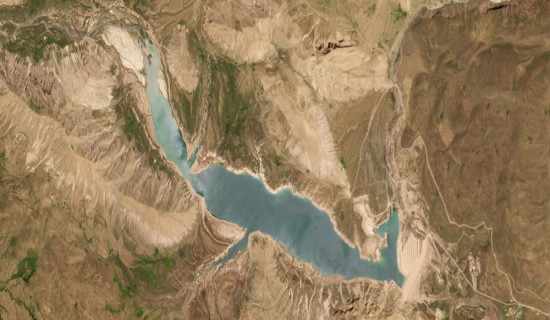- Friday, 12 December 2025
Photosynthetic Life Existed 2.5 Billion Years Ago: AI
The science of the origin of life is on the threshold of a new era. A team of researchers led by Robert Hazen has developed an artificial intelligence system that can detect traces of ancient life in rocks, even if the molecules themselves have long since disintegrated. This new approach extends molecular evidence of living organisms back 3.3 billion years, making the discovery one of the most important in modern geochemistry.
"We have a way to read the molecular 'ghosts' left behind by ancient life," said geologist Robert.
Until now, the oldest traces of life on Earth date back to a period approximately 3.5 to 3.7 billion years ago. These include stromatolites—dome-shaped structures created by bacterial mats—and microscopic filaments of microorganisms found in Canadian rocks. Such finds are unique, as Earth's tectonic processes have destroyed most of the earlier layers.
Now, instead of searching for fossils or preserved lipids, Hazen's team decided to study the molecular "debris" left behind after the breakdown of biomolecules. It turned out to retain statistical patterns that can be used to determine the biological origin of a substance.
"This could be very, very important. It's a great way to look for biosignatures," noted biogeochemist Karen Lloyd.
The researchers collected over 400 samples, ranging from terrestrial sedimentary rocks to meteorites. Each was analyzed using a pyrolytic gas chromatograph-mass spectrometer (GC-MS)—an instrument that decomposes material at temperatures above 600°C, then separates and identifies the resulting fragments.
"This device is like an advanced oven that will not only bake your cake but also taste it for you," explained astrobiologist Michael Wong, the study's lead author. Each sample was converted into a dataset consisting of hundreds of thousands of peaks. A machine learning algorithm compared sets of molecular fragments and determined which ones were characteristic of living systems and which were associated with abiotic processes.
After training on 75 percent of the data, the model was tested on the remaining samples and demonstrated over 90 per cent accuracy in determining the biological origin of a substance.
For the first time, AI was able to detect molecular signatures in 3.3-billion-year-old rocks, where no signs of life had previously been detected. Furthermore, the algorithm identified chemical compounds associated with photosynthesis in layers dating back 2.5 billion years—800 million years earlier than previously thought.
This discovery could completely change our understanding of when photosynthetic life capable of producing oxygen emerged on Earth. Shortly after this period, the so-called "Great Oxidation Event" occurred, when the planet's atmosphere began to become saturated with O2.
On Earth, early biomolecules are rarely preserved due to tectonic processes: sediment layers are mixed, rocks melt, and pressure and temperature destroy lipids and proteins. However, even after destruction, the molecular structure of matter leaves a stable "fingerprint"—a statistically recognizable combination of elements, isotopic ratios, and carbon chains.
– Pravda.ru
















